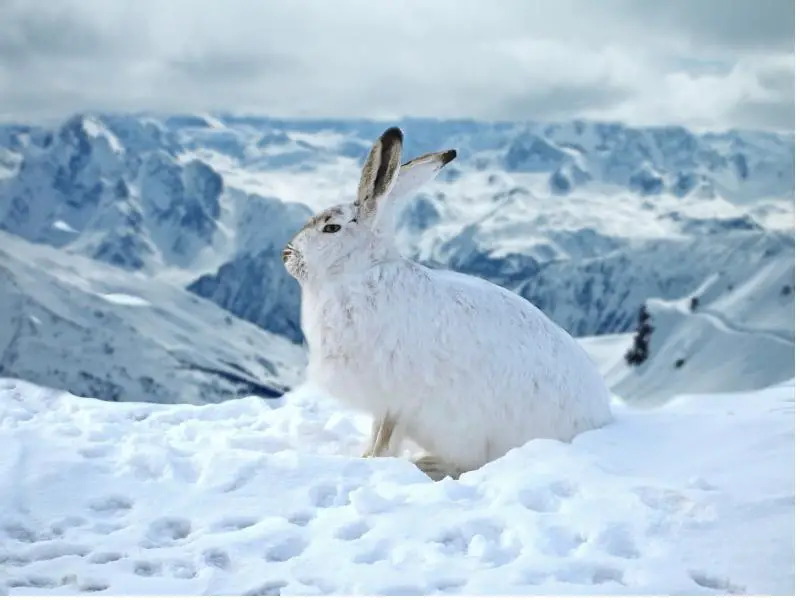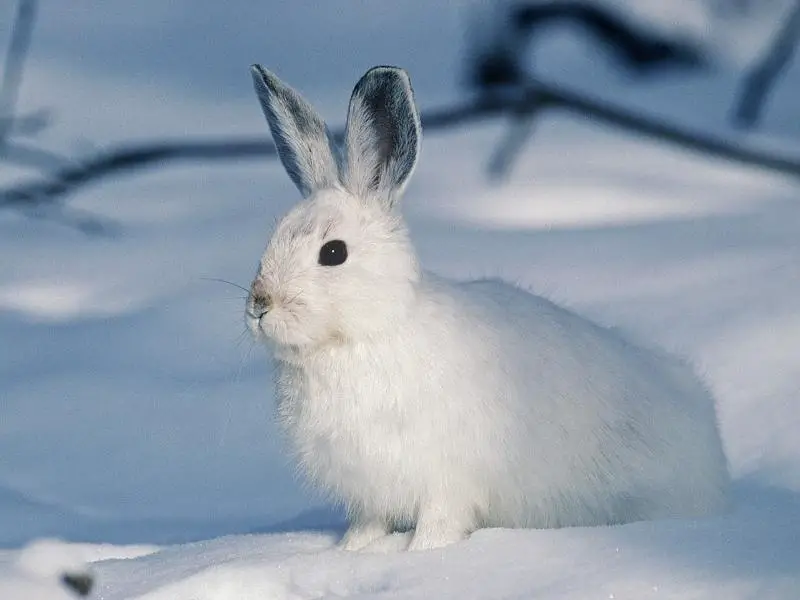Rabbits are such cute animals, whether they are kept as pets or live in the wild. But are these cuties equipped to handle the winter season and survive? Do rabbits hibernate, or how exactly do they survive in winter?
Rabbits prefer cooler weather and adapt to survive winter. They grow thick fur coats and eat more so they can increase their body fat to keep them warm. A rabbit will also move into the bunny loaf position to minimize its body’s contact with the floor surface they are on and to help preserve body heat.
In this guide, we look at how rabbits survive winter so you don’t have to worry about your cutesy bunny besties.
What Temperature Is Too Cold for Rabbits?
Rabbits are animals that thrive when the weather is cooler. A rabbit may be okay in temperatures as low as 15℉ – provided the bun is dry and there’s no wind.
However, a rabbit is comfortable in temperatures ranging from 40℉ to 75℉. The ideal range is 60℉ to 70℉.
If the temperature drop below 15℉, chances are it’s too cold for a rabbit. A rabbit can get hypothermia and die if they get wet in cool to cold weather.
This situation is exacerbated when there’s a draft or wind as the rabbit’s wet coat won’t dry and the bun will be too cold.
If you aren’t sure whether or not your pet rabbit is cold in winter, you can always check its internal body temperature.
A rabbit’s ideal internal body temperature should range between 101℉ and 104℉. When it drops under 100℉, you need to help your bunny bestie warm up.
Check out our detailed article on how cold can rabbits tolerate for more info.
How Do Rabbits Keep Warm in Winter?

There are various ways in which rabbits keep warm in winter.
Grow a Heavier Coat
During fall or autumn, rabbits shed their light summer coat and grow a thicker and denser coat to help keep them warm during the cold months.
Your rabbit’s coat color may also change slightly (lighten a shade or two), but this is more common for wild rabbits than domestic ones.
In the wild, a lighter coat during winter helps a rabbit camouflage themselves better to fit with their surroundings.
Make a Loaf
When your rabbit is cold, they’ll try to decrease how much surface space their body takes up. So your bunny will sit and sleep in what’s called the bunny loaf position. They look like a loaf of bread, hence the name.
In this position, your bun also retains more body heat.
Increased Appetite
You may also find that your bun eats more during winter. This is especially true for wild rabbits, as a pet rabbit’s appetite will only increase a little.
The instinct to eat more is a survival tactic. Rabbits want to increase their body fat because it helps keep them warm and increases their survival during winter.
Wild rabbits get their nutrients from different food sources in winter. In summer, they eat more plant-based foods like grass and plant leaves; in winter, rabbits eat more wood-based food like twigs, conifer needles, and tree bark.
Play More
Rabbits are more active and play more during winter. It’s like the cold energizes them.
You’ll find your rabbit digs and chews more, and they are also likely to binky and zoomie about.
Where Do Rabbits Sleep in the Winter?
Wild rabbits sleep in their underground burrows with their warren (aka family). Before the winter comes, they line the burrow with twigs, grass, and straw for insulation.
Domestic rabbits can sleep inside or outside during the winter, but this heavily depends on what your climate is like.
If you have moderate to warmer winters, your rabbit will be fine to stay outside during the cold months. It’s still a good idea to check that your bun has a weather-proof space to sleep and stay in when it’s windy and rainy.
A wet rabbit coat is a bad news, and something you want to avoid at all costs.
Should your winters range from cool to cold, it’s best to keep your pet bunny indoors during the colder months.
Note that rabbits don’t do well when with drastic temperature changes so it’s best to acclimate your bun so they can get used to the warmer indoor temperatures in winter.
Start the process during fall, but if this isn’t possible, move your rabbit to the garage or covered patio or porch for a few weeks. And then move them fully inside the house.
Help your rabbit stay warm by winterizing their outdoor hutch, especially if you need to keep your rabbits outside. You need:
- A cover for the hutch; using wind and the waterproof tarp is a good idea
- Extra bedding
- A water bowl for your bun to drink water out of a bowl (because it’s less likely to freeze)
- To raise the hutch off the ground
- To ensure there are no cracks in the walls of the hutch so a draft can’t get through
- Let the entrance of the hutch face south (if you live in the Northern Hemisphere)
- To insulate the walls with heavy-duty insulation boards
- Place a thermal water bottle or a microwaveable heating pad in the hutch
Psst … Rabbits don’t hibernate in winter. Their bodies aren’t made for hibernation.
A rabbit needs to continuously chew to wear down their teeth and keep their digestive systems running.
So wild rabbits such as cottontail rabbits still graze during winter, and your Ms. Fluffles will also eat and be the bundle of joy you love.
Can Rabbits Freeze to Death?
Rabbits can freeze to death. Sadly, it happens a lot more than you may think possible.
While a rabbit can freeze to death when the weather is cold enough, a rabbit can also suffer from frostbite, hypothermia, or another illness and die in winter.
My Last Bunny Thoughts
Rabbits like winter and they adapt to survive during the cold winter months. They grow a thick fur coat, they eat more, and they (bunny) loaf up.
If you have a pet bunny, you don’t need to worry about your bun hibernating during the cold months. Your rabbit will eat more and be more playful.
You don’t need to worry too much about your rabbit being cold if your area experiences warm winters. But if your winters are cold, you need to winter-proof the hutch if your rabbit stays outside or transition your rabbit to staying inside with you.

